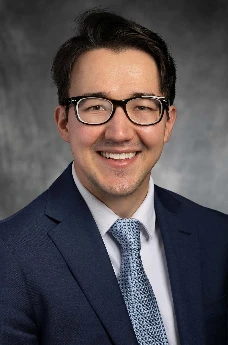Main Session

Sep
29
QP 04 - Health Care Access and Engagement and Professional Development/Medical Education 1: Quick Pitch
1023 - Experimental Index Fund Investment vs. Historical NIH Grant Application Strategy to Fund Clinical Radiation Oncology Research
Presenter(s)

Nicholas Zaorsky, MD, MS - University Hospitals, Cleveland, Ohio
N. G. Zaorsky1, D. E. Spratt1, J. M. Dahle2, and M. Wang3; 1Department of Radiation Oncology, University Hospitals Seidman Cancer Center, Case Western Reserve University, Cleveland, OH, 2Utah Emergency Specialists, Salt Lake City, UT, 3University Hospitals, Case Western Reserve University School of Medicine, Cleveland, OH
Purpose/Objective(s):
Academic radiation oncologists are encouraged to obtain NIH grant funding to maintain salary-protected research time. Given the low likelihood of funding, small amount funded, and time spent writing unfunded grants, it is unknown if physicians could more efficiently cover protected research time by an alternative approach using passive income index fund investing from short-duration clinical patient volume. We hypothesize that an experimental index fund investment strategy would outperform the historical NIH grant approach in maintaining funding at 5, 10, and 20 years.Materials/Methods:
We assumed both physician sets were hired at 0.6 FTE clinically (3/5 weekdays), 0.4 FTE protected (2/5 weekdays), and expectation to have 0.2 FTE protected by year 5. For the historical approach, we assumed 2 grant submissions/year to the NIH/NCI x 4 years, NCI funding success of 8%/application, 7.8% of funding to clinicians, $449,000 average funding amount, from published work. For the experimental approach, we assumed the physician taking an extra 0.2 FTE x 5 years (total 0.8 FTE/year), total charges of $2.5M/year, subtract 40% for hospital overhead, proceeds in 90% VTSAX + 10% VBTLX or equivalent, dividends reinvested, 0.07% fees, $100K/year withdrawal, using Monte Carlo simulations with random historical cycles in the USA during 1871-2023, 0% capital gains tax, inflation-adjusted. 100 simulations were run with each strategy.Results:
The success rate of the historical strategy was 5/100 simulations by 5 years, with awardees having $449,000. This resultant funding was only sufficient to cover 0.04 FTE over 5 years, nothing after. 0 physicians had funding by 10+ years, all were shifted back to 0.8 clinical FTE. Using the experimental strategy, at year 5, 100/100 of simulations resulted in physicians obtaining >$1M, median of $1.8M (interquartile range $1.6M to $2.1M). Based on Monte Carlo analysis, at 10 years, 100% of portfolios were successful to continuously fund salary at $100,000/year, without additional clinical FTE, median balance $2.1M (interquartile range $1.2M to $3.0M). At 20 y, 83/100 (83%) of physicians (111/133 cycles) were successful, median balance $2.2M (interquartile range $0.7M to $4.1M). Both strategies struggled during 20/152 years (e.g., depressions, wars, shutdowns). Funding generated by the historical strategy was payable only to the university; that from the experimental strategy was payable to any party (university, hospital, investigator, etc.). To equal the experimental success funding rate just at 5 years, the historical strategy physician would have to submit >40 grants/year.Conclusion:
The experimental approach was vastly superior to the historical approach in obtaining research funding and building a long-term capital-driven research program. If the NIH and NCI intend to improve funding of academic radiation oncologists, they should increase grant size, funding success rate, clinician funding, salary covered, duration, and broaden payable parties.